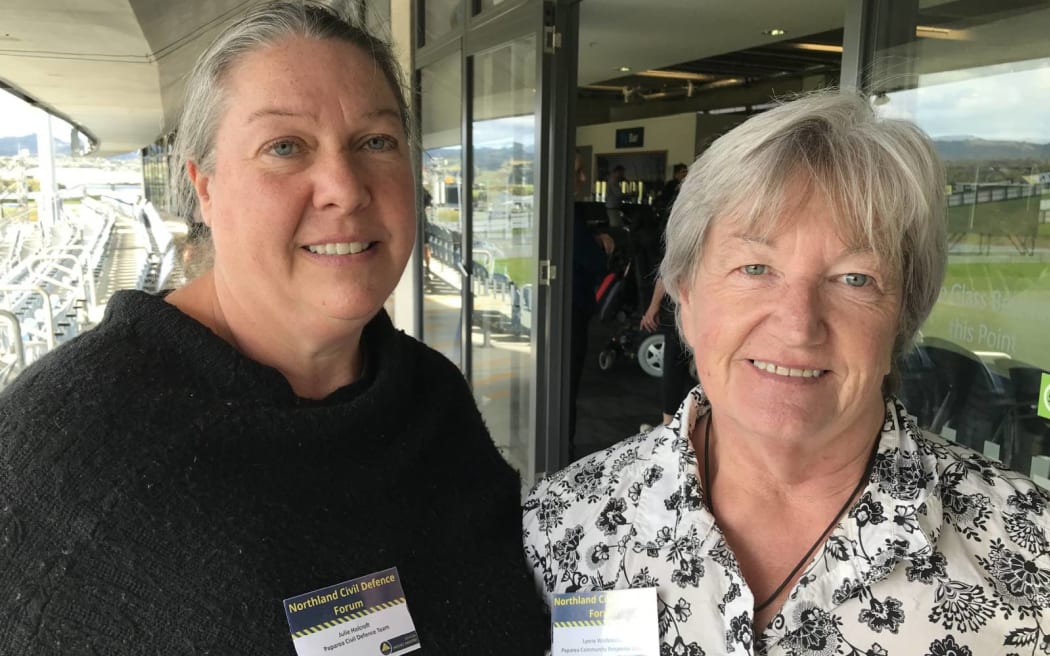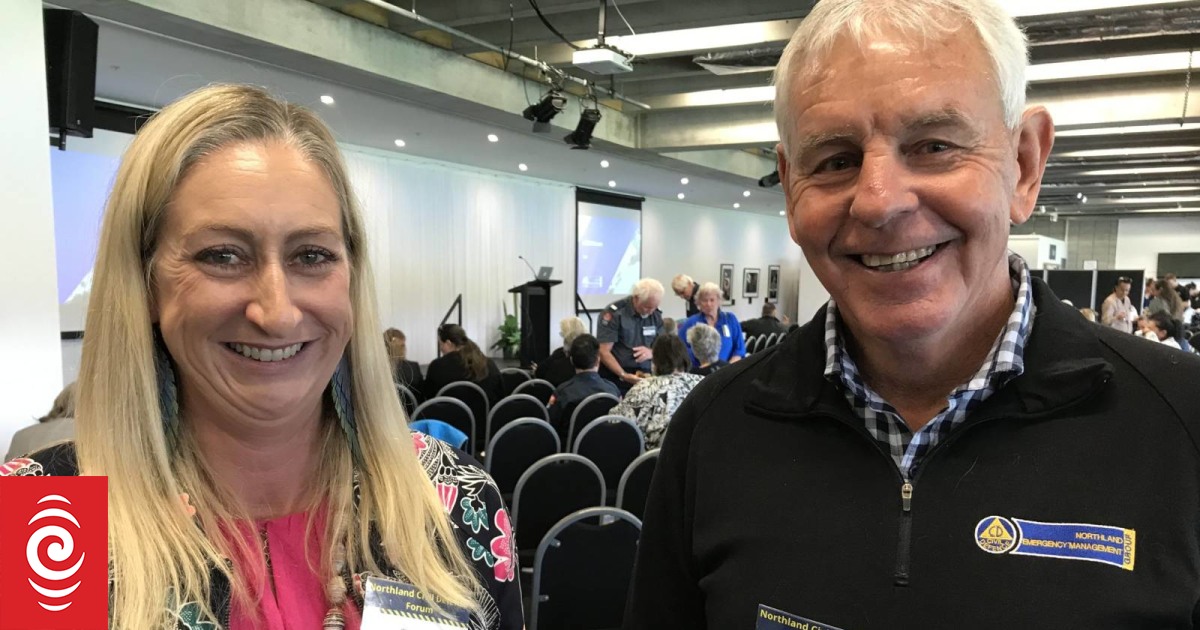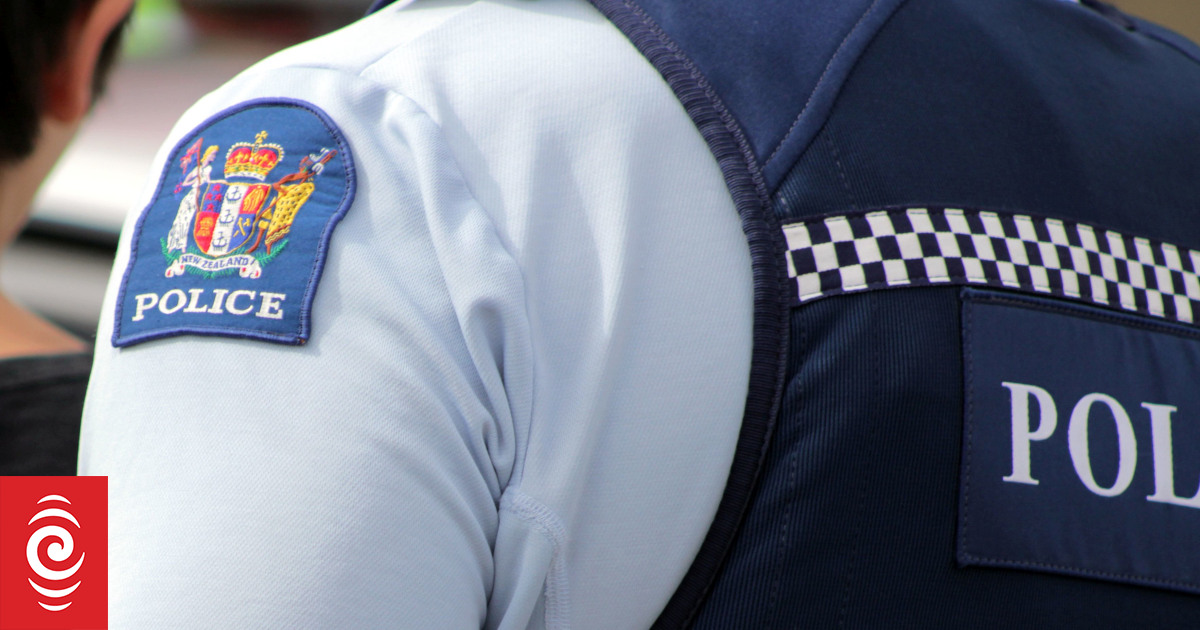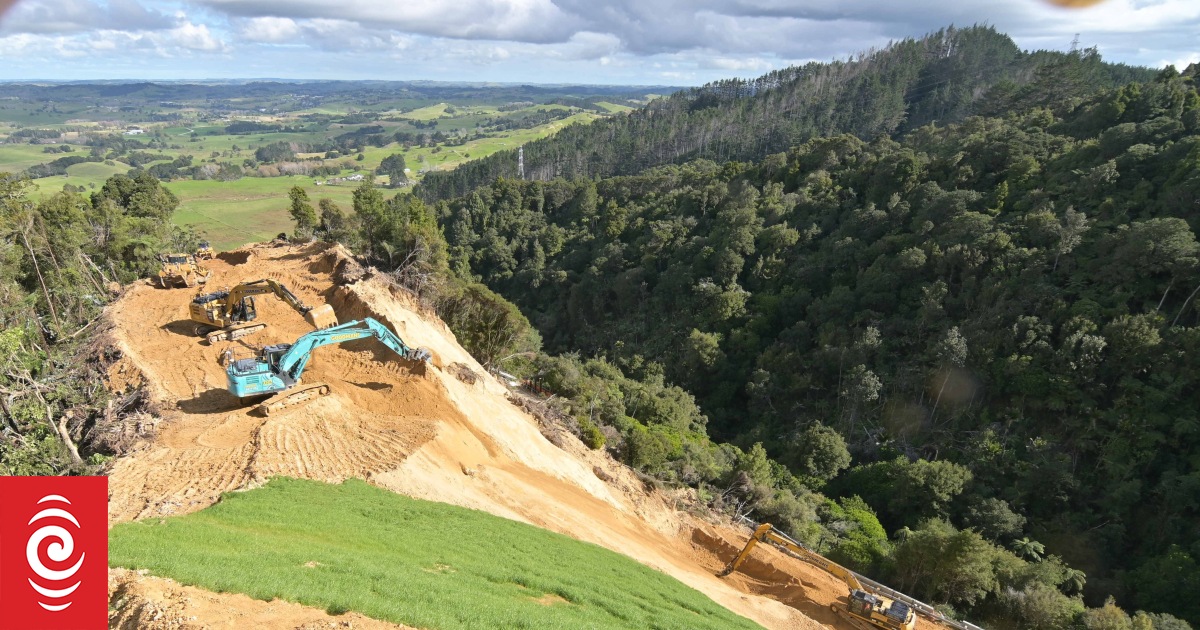
NEMA national controller Wendy Wright and Northland Civil Defence manager Graeme MacDonald.
Photo: Susan Botting, Local Democracy Reporter Northland
New Zealand’s highest-ranked civil defence emergency response leader says systems rather than people are at the heart of major criticisms in the newly-released government inquiry into 2023 severe weather responses.
National Emergency Management Authority (NEMA) national controller Wendy Wright’s comment comes in the wake of the North Island severe weather events report, released on 23 April.
The inquiry, headed by former Governor-General Sir Jerry Mateparae, looked at the emergency responses to the catastrophic Cyclones Gabrielle, Hale and other major weather events in the North Island including the Auckland Anniversary weekend floods.
The report found New Zealand was not ready to respond to large-scale emergencies, the country’s emergency management system had failed in places, and it was not fit for purpose.
Wright spoke to about 300 people at the Northland Civil Defence Emergency Management Forum, held in Whangārei on Wednesday.

The Department of the Prime Minister and Cabinet (DPMC) was now analysing the report and would make recommendations to the government in July on actions to be taken, she said.
It would then be up to the government to decide which of these actions to take and accompanying funding.
She would not be drawn on what actions the government should go with.
Wright said NEMA welcomed the review, which made it clear the country’s emergency management system was not up to scratch.
But it was important to remember it found issue with the systems, rather than the thousands of people responding across impacted areas, she said.
“How do we lift and improve the system for those people?”
Wright said New Zealand had one of the highest emergency hazard risks in the world, second only to Bangladesh.

Northland Civil Defence Emergency Management group chairperson Kelly Stratford.
Photo: Susan Botting, Local Democracy Reporter Northland
New Zealanders needed to learn their local hazard risks and how they were prepared to deal with these.
Northland Civil Defence Emergency Management group chairperson Kelly Stratford said it was clear from reading the report that Te Tai Tokerau would not have coped if it had been hit as badly by Cyclone Gabrielle as Hawke’s Bay and Tai Rāwhiti.
That was in part because of its multiple isolated communities and many people in those communities not understanding their important and critical role in an emergency response.
Community expectations of what civil defence could do in an emergency response did not match what could be delivered, she said.
People needed to be prepared for longer than the traditionally recommended three days before help might arrive, she said.
Northland’s community preparedness was specifically highlighted in the inquiry report.
Stratford said much of Northland would not have been able to fare as well during the severe weather events if not for the many marae which stepped up.
Sixty-six communities around Northland have community response plans from Te Hapua near Cape Reinga in the North to Oruawharo in the very south of the region – Far North 34, Whangārei district 17 and Kaipara 15.
Wright said Northland’s community response plans offered opportunity for other parts of the country to follow as a way to strengthen people connecting into civil defence emergency readiness and response.
Kaipara’s Paparoa Community Response Group co-ordinator Lynne Warbrooke said there were lots of people who had done the best they could in the extreme weather situations they faced.
Warbrooke said civil defence was not a collection of people on white chargers riding in to save the day.
It was communities, which knew their local areas and had strong people networks, that were also civil defence.
She said the Cyclone Gabrielle emergency response had overall been good in Kaipara.

Paparoa Community Response Group co-ordinator Lynne Warbrooke (right) with group member Julie Holcroft.
Photo: Susan Botting, Local Democracy Reporter Northland
Working more closely with people in communities at the local level was one of the inquiry’s major improvement recommendations.
Northland Civil Defence Manager Graeme MacDonald said his group was waiting to see what the government decided needed to do as a result of the report.
The inquiry’s recommendation that civil defence worked more closely with its communities was an aspect Northland could further strengthen, he said.
MacDonald said Northland’s community response plans had begun in Kaitāia in 2006.
“That model has become the foundation for the work we do in Northland,” he said.
MacDonald said Northland Civil Defence had significantly boosted its capacity to work with Māori in the last 18 months, including appointing an iwi relations manager.
LDR is local body journalism co-funded by RNZ and NZ On Air.




